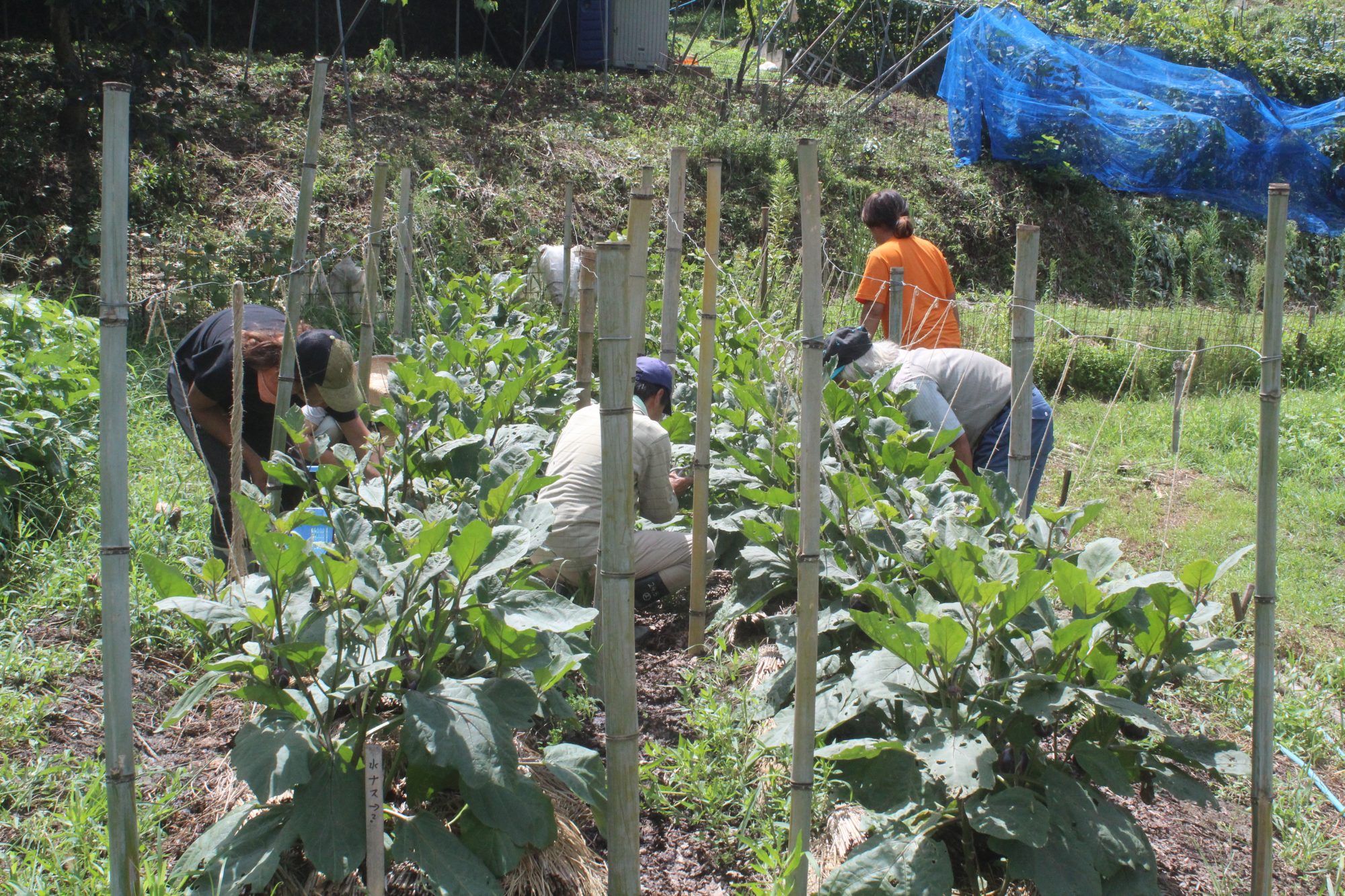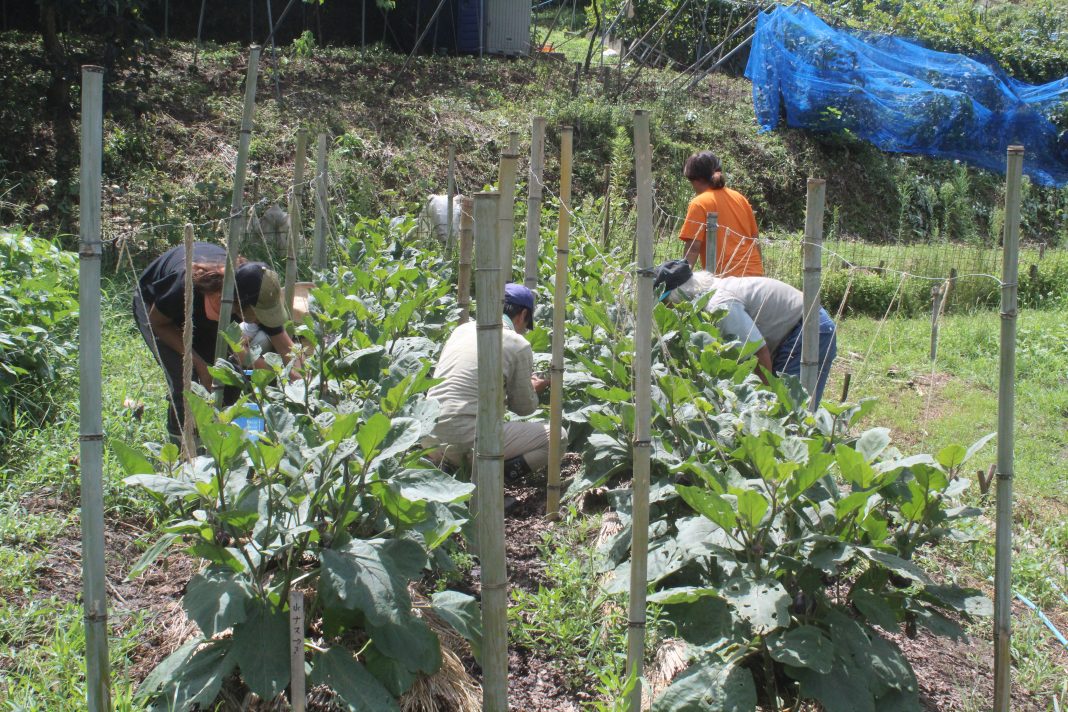Hiroyuki Tsunashima, a designated lecturer at Urban Resilience Research Center, Osaka Metropolitan University investigates the link between the agricultural and social welfare sectors
A movement toward a “partnership between agriculture and social welfare” seems to have recently gained ground in Japan. As proof of this, the competent ministries for the agricultural and social welfare sector have formed a new alliance to promote the movement, based on the idea that the shorthanded agricultural sector can offer job opportunities to the people excluded from the existing labor market.
We could also realize the intrinsic value of the partnership from different angles. I would like to illustrate this with an example, which I have presented since the time when such a new phrase has not still been coined.
An urban problem and agriculture
In the late 1990s, major cities in Japan witnessed an unprecedentedly large number of homeless people because of the mass unemployment that followed the economic recession since 1991. In the meantime, the agricultural sector had already been suffering manpower shortages, as exemplified by the increased area of uncultivated farmland. Involved in activities supporting the homeless in Osaka, the largest city in Western Japan, I gradually became confident that those two social phenomena were two sides of the same coin, indicating that there was something wrong with the urban-rural relationship.
At that time, in the early 2000s, the municipal government had already been implementing the Special Scheme of Job Opportunity Provision for the Elders, which targeted only the homeless aged 55 years and older in principle, providing jobs in the maintenance of municipal facilities such as cleaning and mowing. Whereas it was apparent to anyone that the scheme was inadequate in terms of quantity, I personally thought that the scheme lacked something in terms of quality. Then, the idea of creating alternative jobs in agriculture on my own struck me somehow. In so doing, I might be able to simultaneously address the imbalanced urban-rural relationship.
Hurdles to overcome before the start
The majority of Japanese still considered poverty as a concern of other countries, especially in the “developing world”. Most agronomists were not the exception. Studying agricultural development in a disadvantaged area populated by ethnic minorities in India, I waited for a chance to carry out the idea. There were two major hurdles: how to open a farm and how to raise funds. Regarding the former, although there were more and more abandoned farmland pieces, landowners rarely allowed outsiders to use them for several reasons. I first trained myself in farming, upon which a landowner in the vicinity of Osaka City finally approached me with a proposal to offer a parcel that his family had left uncultivated for decades.
As for the latter hurdle, by the time of his proposal, I had become entitled to apply for a research grant-in-aid provided by the Japan Society for the Promotion of Science. The screening is performed according to the classification by the research field. My research plan seemed to suit better the “study of social welfare” than any field of agronomy. In a bid to survive the screening, I incorporated several concepts developed in the field such as “social exclusion/inclusion” into my research plan.

Project outlines for the partnership of the agricultural and social welfare sectors
Having cleared those two hurdles in 2011, I started an action research project to examine whether the idea of job creation in agriculture would work. The participants were not only homeless individuals but also some entrepreneurs supplying the youth with training for employment preparation. Having recovered 30 are-farmland, we came to grow vegetables, nearly 20 species at all times, and periodically sell the harvest at some places in Osaka City. Partly because I alone had an experience in cultivation, I happened to act as the director who gave instructions to the participants.
From the perspective of social inclusion, if participants found their job opportunities more meaningful than a mere solution for the manpower shortage, the current initiative would deserve to continuously receive funds from the government or other agencies. With the aim of elucidating the significance of these job opportunities, interviews with participants were conducted after the passage of a certain time. The most noteworthy results related to the interaction between the elder homeless laborers and the young trainees.
Outcomes and better human relationships
Having never met the latter, the former sometimes had a preconception that homeless people were dangerous, for example. However, as they work together, they both would build a human relationship with each other. A young trainee said, “At first I felt uneasy about working with homeless people, and a friend of mine asked me if it would be dangerous to do so, but it became clear that they are nice fellows as a matter of course.” Another added, “They were kind enough for me to tell me how to carry materials for fence and how to hammer post into the ground.”
Many homeless colleagues had rural backgrounds as well as ripe experiences in physical labor. Since they used to watch how their parents worked in their childhood, they could correctly guess the rightful purposes of the farm implements. And besides, as they had extensive experience in life with plenty of confidence, they can teach the youngsters how to use those implements and how to cooperate with co-workers. In the meantime, an awareness that the public tends to ascribe their homelessness to some failures in their career experiences made them doubtful whether they were allowed to instruct the young trainees on how to work. They seemed to deal with young trainees in a modest manner, which implies all the more their aptitudes for leading those young folk. New job opportunities would stem from these findings made at the interface between the two sectors.
Nevertheless, I gradually perceived that a real difficulty lies in the fact that urban dwellers lack an understanding of what it is to do farm work. In comparison with construction work, for example, both are physical ones, on one hand. In retrospect, I assumed former construction workers were, therefore, well suited to agriculture. On the other hand, there is a fundamental difference; to do farm work is to deal with lives, each of which is different in character. I would like to detail this point in the next issue.

This work is licensed under Creative Commons Attribution-NonCommercial-NoDerivatives 4.0 International.


